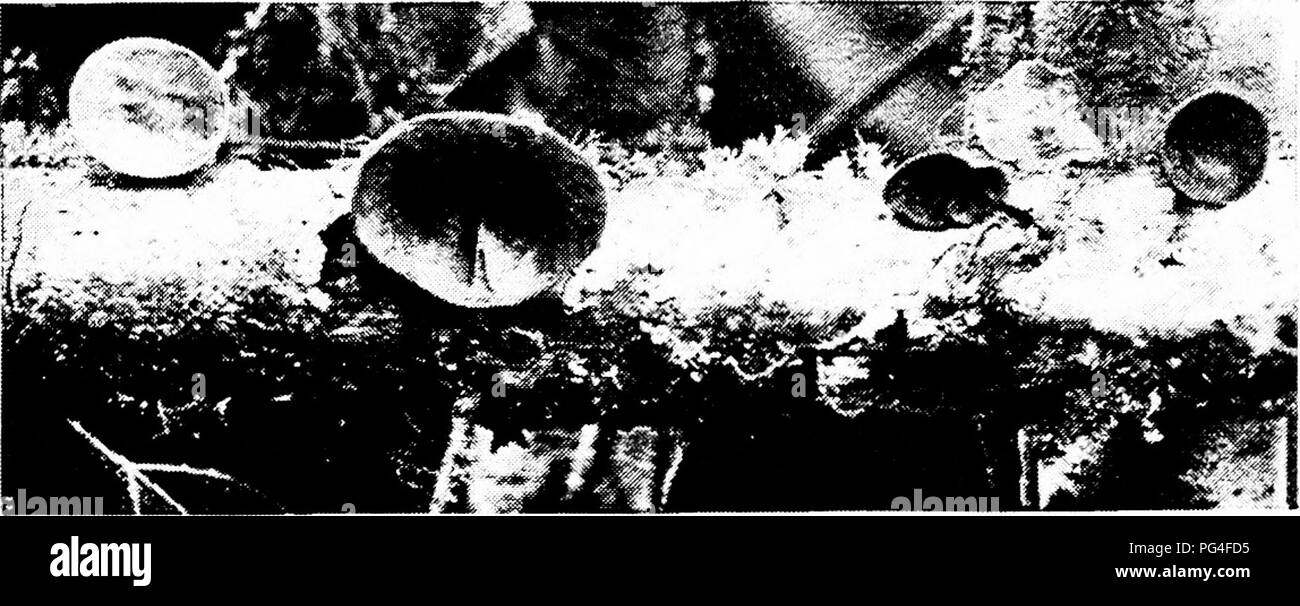. Minnesota plant diseases. Plant diseases. Minnesota Plant Diseases. 167 fungi is in almost all cases of a gelatinous consistency, especial- ly in the interior, and this is due to the gelatinization of the outer portion of the fungus threads, which compose it. The threads, therefore, appear as a very loose network in a great mass of gelatine. Near the surface of the fruiting body the thread walls do not gelatinize but, by the dense network there produced, form a tough covering. The basidia usually cover a special area as they do in the common Jews' ear fungus. In the young basidium a fusion o

Image details
Contributor:
Central Historic Books / Alamy Stock PhotoImage ID:
PG4FD5File size:
7.1 MB (462.5 KB Compressed download)Releases:
Model - no | Property - noDo I need a release?Dimensions:
2508 x 996 px | 21.2 x 8.4 cm | 8.4 x 3.3 inches | 300dpiMore information:
This image is a public domain image, which means either that copyright has expired in the image or the copyright holder has waived their copyright. Alamy charges you a fee for access to the high resolution copy of the image.
This image could have imperfections as it’s either historical or reportage.
. Minnesota plant diseases. Plant diseases. Minnesota Plant Diseases. 167 fungi is in almost all cases of a gelatinous consistency, especial- ly in the interior, and this is due to the gelatinization of the outer portion of the fungus threads, which compose it. The threads, therefore, appear as a very loose network in a great mass of gelatine. Near the surface of the fruiting body the thread walls do not gelatinize but, by the dense network there produced, form a tough covering. The basidia usually cover a special area as they do in the common Jews' ear fungus. In the young basidium a fusion of elements similar to that in the young winter spore of rusts occurs, and has also been inter- preted as a breeding act. When the fruiting body is dried, it usually becomes hard and homelike and shrinks very greatly in size. From each of the four cells of the basidium a stalk is sent up to the surface of the palisade area and there.tpinches ofif a single spore just as do the basidia of the rust fungi. The Jews'. Fig. 79.—^Jew's-ear fungus fruiting bodies on a dead branch of balsam fir. Original. ear fungi have also accessory spore-forms, but not in such abundance nor with such variety as they are found in the rusts. The common Jews' ear fungus, which is found almost all over the world, has been collected only in the northern part of our state, where it occurs in great abundance on dead logs of bal- sam fir, white cedar and other trees. (Figs. 78, 79.) Trembling fungi {Tremellinece). These fungi include forms which have a great superficial resemblance to the Jews' ear fungi and derive their common name from the gelatinous con- sistency which allows them to tremble, as it were, at the slightest agitation. They are all saprophytic, usually on de- caying wood and logs. The fruiting body assumes in different. Please note that these images are extracted from scanned page images that may have been digitally enhanced for readability - coloration and appearance of these illustrations